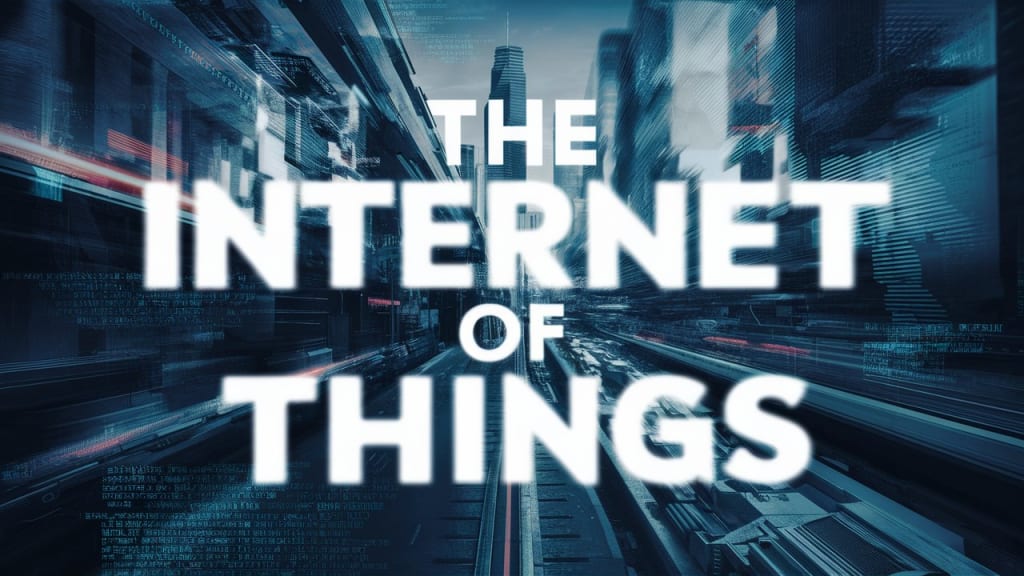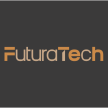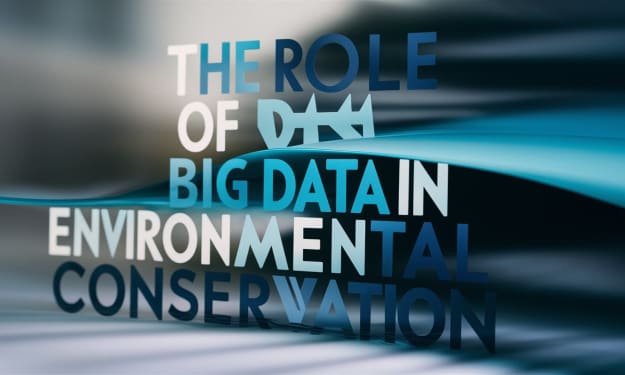he Internet of Things: Connecting Devices for a Smarter World
Exploring the Revolution of IoT and Its Impact on Everyday Living

Introduction
In today's digital age, connectivity has become the cornerstone of innovation. From smartphones to smart homes, our world is increasingly becoming interconnected through the Internet of Things (IoT). But what exactly is the IoT, and how is it reshaping our daily lives? In this article, we'll delve into the fascinating world of IoT, exploring its definition, applications, and the myriad ways it's revolutionizing the way we live, work, and interact with the world around us.
Click Here to Enhance Your Product Range with Ease!
Understanding the Internet of Things
The Internet of Things (IoT) refers to the network of interconnected devices embedded with sensors, software, and other technologies that enable them to collect and exchange data over the internet. These devices can range from everyday objects like household appliances and wearable gadgets to industrial machinery and smart infrastructure.
Key Components of IoT
Sensors: Devices equipped with sensors that collect data on various parameters such as temperature, humidity, motion, and more.
Connectivity: Technologies like Wi-Fi, Bluetooth, and cellular networks enable devices to communicate with each other and with centralized systems.
Data Processing: Advanced algorithms and cloud computing platforms analyze the data collected by IoT devices, deriving insights and facilitating decision-making.
Actuators: Some IoT devices are equipped with actuators that allow them to perform actions based on the data they receive, such as adjusting temperature or activating alarms.
Applications of IoT in Everyday Life
The IoT is permeating almost every aspect of our daily lives, offering a myriad of applications that enhance convenience, efficiency, and safety.
Smart Home Automation
Smart home devices are perhaps the most familiar application of IoT for many people. From thermostats that learn your preferences to voice-activated assistants that control lights and appliances, IoT technologies are transforming houses into intelligent, interconnected spaces.
Examples of Smart Home Devices:
Smart Thermostats: Devices like the Nest Learning Thermostat adjust temperature settings based on your habits and preferences, saving energy and enhancing comfort.
Smart Lighting Systems: LED bulbs that can be controlled remotely via smartphone apps or voice commands, allowing for customizable lighting scenes and energy savings.
Smart Security Cameras: Surveillance cameras that provide real-time video feeds and alerts, enhancing home security and peace of mind.
Wearable Technology
IoT has also made its way into our wardrobes with wearable devices that track fitness, monitor health metrics, and provide personalized insights.
Popular Wearable Devices:
Fitness Trackers: Devices like Fitbit and Garmin track your activity levels, heart rate, and sleep patterns, motivating you to lead a healthier lifestyle.
Smartwatches: Watches from Apple, Samsung, and other manufacturers offer features like notifications, GPS navigation, and contactless payments, making them indispensable companions for modern life.
Health Monitoring Devices: Wearables that monitor vital signs like blood pressure, glucose levels, and ECG readings, providing valuable data for managing chronic conditions and staying proactive about health.
Connected Cars
The automotive industry is embracing IoT technologies to create connected vehicles that offer enhanced safety, convenience, and entertainment features.
Features of Connected Cars:
Telematics: Connected cars use telematics systems to collect and transmit data on vehicle performance, location, and driver behavior, enabling features like remote diagnostics and predictive maintenance.
Infotainment Systems: Integrated multimedia systems provide navigation, entertainment, and connectivity features, keeping drivers informed and entertained while on the road.
Advanced Driver Assistance Systems (ADAS): IoT-enabled sensors and cameras enhance safety by providing features like adaptive cruise control, lane-keeping assistance, and collision avoidance.
Smart Cities
IoT technologies are being deployed in urban environments to create smart cities that improve efficiency, sustainability, and quality of life for residents.
Click Here to Enhance Your Product Range with Ease!
Components of Smart Cities:
Smart Energy Grids: IoT-enabled sensors and meters monitor energy usage and optimize distribution, reducing waste and lowering costs.
Intelligent Transportation Systems: Traffic management systems use real-time data to optimize traffic flow, reduce congestion, and improve safety on roads.
Environmental Monitoring: Sensors measure air quality, noise levels, and other environmental factors, enabling authorities to take proactive measures to improve urban air quality and mitigate pollution.
Challenges and Considerations
While the IoT offers numerous benefits, it also presents several challenges and considerations that need to be addressed.
Security and Privacy Concerns
The proliferation of connected devices raises concerns about data security and privacy. Vulnerabilities in IoT devices can be exploited by hackers to gain unauthorized access to sensitive information or even control connected systems.
Solution: Implementing robust security measures such as encryption, authentication, and regular software updates can mitigate security risks and protect user privacy.
Interoperability and Standards
The lack of interoperability and standardized protocols can hinder the seamless integration of IoT devices from different manufacturers. Incompatibility issues may arise when attempting to connect devices from different ecosystems.
Solution: Developing industry-wide standards and protocols can promote interoperability and ensure that IoT devices can communicate and work together seamlessly.
Data Management and Analytics
The sheer volume of data generated by IoT devices can overwhelm organizations, making it challenging to manage, process, and derive actionable insights from the data.
Solution: Investing in advanced data management and analytics technologies can streamline data processing and enable organizations to extract valuable insights from IoT-generated data.
Ethical and Societal Implications
The widespread adoption of IoT technologies raises ethical and societal questions related to data ownership, consent, and the potential for surveillance and discrimination.
Solution: Establishing clear guidelines and regulations governing the ethical use of IoT data can ensure that these technologies are deployed in a responsible and equitable manner.
The Future of IoT
As IoT continues to evolve, we can expect to see even more innovative applications and transformative impacts on various industries and aspects of society.
5G and Edge Computing
The rollout of 5G networks will enable faster, more reliable connectivity, facilitating the proliferation of IoT devices and applications. Edge computing technologies will bring processing power closer to the devices, reducing latency and enhancing real-time capabilities for IoT applications.
Artificial Intelligence and Machine Learning Integration
The integration of artificial intelligence (AI) and machine learning algorithms will enable IoT devices to become more intelligent and autonomous. These technologies will empower devices to learn from data, make predictions, and adapt their behavior to changing environments.
Expanding IoT Ecosystem
The IoT ecosystem will continue to expand, encompassing a wider range of devices and industries. From healthcare and agriculture to manufacturing and retail, IoT technologies will find applications in diverse sectors, driving efficiency, innovation, and economic growth.
Sustainability and Environmental Impact
IoT has the potential to contribute to sustainability efforts by optimizing resource usage, reducing waste, and mitigating environmental impacts. Smart energy grids, waste management systems, and environmental monitoring solutions powered by IoT technologies can help address pressing environmental challenges and promote sustainable development.
Human-Centric Design
Future IoT solutions will prioritize human-centric design principles, focusing on user experience, accessibility, and inclusivity. Designing IoT devices and applications with the needs and preferences of users in mind will ensure that technology serves as a tool for enhancing human well-being and quality of life.
Click Here to Enhance Your Product Range with Ease!
Conclusion
The Internet of Things is reshaping our world, connecting devices, systems, and people in ways that were once unimaginable. From smart homes and wearable gadgets to connected cars and smart cities, IoT technologies are revolutionizing the way we live, work, and interact with the world around us. As we continue to embrace IoT innovations, it's essential to address challenges related to security, privacy, interoperability, and ethics to ensure that these technologies benefit society as a whole. With ongoing advancements in connectivity, artificial intelligence, and sustainability, the future of IoT promises to be even more exciting, transformative, and human-centric. Embracing the opportunities presented by IoT, we can create a smarter, more connected, and sustainable world for generations to come.
About the Creator
Enjoyed the story? Support the Creator.
Subscribe for free to receive all their stories in your feed. You could also pledge your support or give them a one-off tip, letting them know you appreciate their work.






Comments
There are no comments for this story
Be the first to respond and start the conversation.